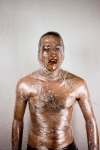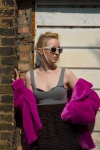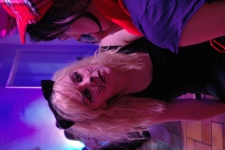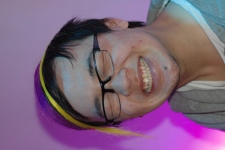UNIT GUIDE LSBU LVL2 DP PAUL
IMAGE PRODUCTION
BA (HONS) Digital Photography
Department of Arts, Media and English
Faculty of Arts and Human Sciences
Autumn Semester 2009
Become what you want to be
Brief-Led Project
| Unit Title: | Ph Image Production |
| Unit Level: | 2 |
| Unit Reference Number: | AME-3-BLP |
| Credit Value: | 20 |
| Total Student Study Hours: | 200 |
| Contact Hours: | 45 |
| Private Study Hours: | 155 |
| Course: | BA (Hons) Digital Photography |
| Year and Semester | 2009 semester 1 |
| Unit Coordinator | Paul Richards
Email: richarp3@lsbu.ac.uk |
| Summary of Assessment Method: | Pass/fail: Production portfolio 1 (weeks 1 – 4)
Pass/fail: Photoshop exam (week 9) 20%: Production portfolio 2 (weeks 5 – 8) 60%: Production portfolio 3 (weeks 9 – 15) 20%: Production analysis (2000 words) |
| Pass Mark | Each element of assessment must gain a minimum mark of 35%. |
| Minimum Mark | A minimum of 40% overall is required to pass the unit. |
1. INTRODUCTION TO THE UNIT
The unit explores advanced studio image production and introduces students to professional postproduction tools for photographic images. Building on image editing and photographic skills acquired at Level 1, students will learn industry standard approaches to manipulating images. Students will be encouraged to experiment with these techniques in their own work, producing a portfolio of high quality images.
2. AIMS OF the unit
- To enable you to work from theoretical material to a practical outcome
- To enable you to apply practical knowledge and skills
- To enable you to continue to develop innovate approaches and solutions
- To provide you with the framework for critical evaluation
3. LEARNING OUTCOMES
Knowledge and Understanding
- Research skills – you will develop a range of research methodologies that will contribute to the production of your own work in a critical context. You will need to identify key resources that you will refer to throughout the unit e.g. specific web sites, journals, libraries, bookshops, galleries. You will develop the ability to use these resources efficiently and to search for specific information quickly. You will also develop methods of sorting and collating the research data you have amassed, to prioritise or archive material in relation to your current work. You will identify the kinds of materials that will enrich your practice in both the immediate (short term) and long term – thinking ahead to the possibility of future work and projects.
- Analytical method of working – You will develop an analytical approach to working that allows you to make changes to the trajectory of your work based on the external influences you encounter. Responding to group criticism, tutorials, research developments and changes in your practical work. In order to progress analytically you must be able to make conscious decisions about the steps you take based on sound critical judgement of the relationship between the intentions of your work and what it is actually communicating (how it actually is). You are strongly recommended to position your chosen project in line with the research conducted within your dissertation.
Intellectual Skills
- Critical Analysis – You will develop an advanced approach to critical analysis of photographic work – both your own work and that of others. You will form these skills during group class discussions and during your project research and will apply these skills to a project presentation at the end of the semester. Your critical opinions and language will be formed through reading relevant literature e.g. critical reviews of work, artists/photographers statements and through listening to your peers and university staff. Most importantly to develop a strong basis for a critical approach to photography you will need to view a great deal of work regularly throughout the project in galleries, magazines, web and books.
Practical Skills
- Time management – this project requires a great deal of commitment and self study – therefore good time management and organisation skills will be essential.
- Photographic skills – This unit will help you to develop a strong set of formal photographic and post production skills. You will learn advanced studio skills using the university lighting equipment and medium format cameras. As well as post production work flows that can be applied to a professional digital imaging environment. This can be summarised into categories of
a) Prepress – understanding a variable workflow to enhance colour correction, tonal contrast, sharpening, noise reduction and professional inkjet printing.
b) Masking & Compositing – understanding in an advanced manner the tools of photoshop that facilitate accurate and variable selection methods. Layer management and layer effects various forms of masking. The fundamental component of this workflow is the understanding of grayscale images/channels/selections and their importance in a masking/compositing work environment.
Transferable Skills
Students have an opportunity to develop:
- Research methods appropriate to media production work
- Self-management, including time and financial control
- Organised written documentation
- The ability to communicate their ideas
- Present ideas in a group context
- Professional working methods in digital photography
4. assessment of the unit
Points Final Grade
70 % > 1st
60 – 69 % 2:1
50 – 59 % 2:2
40 – 49 % 3rd
<40 % Fail
Generic marking criteria:
| 1st | Outstanding work: your conceptual framework has been effectively transported into the chosen format, with originality and technical skill. Outstanding presentation convincingly linked to the subject matter. Attention to detail such as captions, mounting and framing. |
| 2:1 | Well-presented, conscientious work, with a strong concept. While exploring an intellectually challenging idea, the project may be undermined by some minor technical problems; alternatively, while technically proficient, the project may be lacking conceptual rigour or originality. Nonetheless the work stands out as a strong project. |
| 2:2 | Well-presented project displaying a good research concept but somewhat unoriginal or not fully pursued in terms of intellectual coherence. Technically competent but may contain a number of significant errors or lack inspiration or ambition in the use of the medium. Alternatively it maybe be unrealistically ambitious and the research lack behind the proposal. |
| 3rd | This represents a poor project in all aspects: unoriginal or poorly developed concept and incomplete research. Overall it will demonstrate a lack of basic understanding of the brief and problems in developing the basic technical skills to fulfil it. |
| Fail | Project failed to adress all or most of the aspects formulated in the brief. The concept may be weak and /or unoriginal; technically, little or no attempt has been made to achieve the required basic technical skills; presentation may also be poor. |
The Unit contains 5 essential examination elements. You must complete all elements to pass this course with a minimum mark of 40%.
1. Pass/fail: Production portfolio 1 (weeks 1 – 4)
2. Pass/fail: Photoshop exam (week 9)
3. 20%: Production portfolio 2 (weeks 5 – 8)
4. 60%: Production portfolio 3 (weeks 9 – 15)
5. 20%: Production analysis (2000 words)
- 1. Portfolio 1. Pass/Fail
5 Images made in weeks 1 – 4 printed A4
- Liquid colour (1 image)
- Bread Product (2 images)
- Sculptural Silverware (2 images)
Portfolio to be submitted to photography office no later than 5 pm 15th October
- 2. Photoshop Exam (week 9) Pass/Fail
Thursday 12 November Keyworth Building 10 – 1
- Part i. Photoshop masking workflow (1 hour)
You will complete 2 tasks, utilising specifically skills learnt and developed within the Masking element of the course. The tasks will refer specifically to skills demonstrated in Katrin Eismann’s Photoshop Masking and Compositing Book. You will edit images using photoshop CS4 on the LSBU macintosh computers.
Learning Resources
Essential: Photoshop Masking and Compositing (Eismann), Photoshop CS4 Keyboard shortcuts list, Photoshop Retouch and repair (Eismann)
Recommended: Photoshop CS4 Bible (Wiley press), Photoshop CS4 Classroom in a book (Adobe press), Lynda.com tutorials, Kelby.com tutorials, Photoshop Channels and Masks Bible (Wiley),
- Part ii. Photoshop CS4 Keyboard Shortcuts (1 hour)
You will complete a written exam, questioning your knowledge of the keyboard shortcuts used in Photoshop CS4. You will be asked to provide the keyboard short cuts for 100 regular tools or commands selected from the list handed out on week 1.
Learning Resources
Essential: Photoshop CS4 Keyboard shortcuts list
Recommended: Photoshop CS4 Bible (Wiley), Photoshop CS4 Classroom in a book (Adobe), Lynda.com tutorials, Kelby.com tutorials
- Part iii. Prepress colour correction work flow (1 hour)
You will correct a selection of images according to the prepress colour correction work flow demonstrated in weeks 1-3. For each image edited you will be required to write basic notes in the image using the notes tool to describe the stages used (specific blending modes used, sharpening and colour correction method undertaken)
Learning Resources
Recommended: Class handouts and youtube video tutorials, Picture Postcard Work Flow by Dan Margulis (video series), Adobe Kuler, Professional Photoshop (Dan Margulis), LAB colour the Canyon Conundrum (Dan Margulis), Photoshop CS4 Bible (Wiley), Photoshop CS4 Classroom in a book (Adobe), Lynda.com tutorials, Kelby.com tutorials,
3. Portfolio 2. (20%)
The brief for this portfolio will be distributed in week 4.
You will be required to produce 4 images with specific themes. You can use medium format cameras or 35mm digital SLR cameras. All images must be printed A4 1 image per page (framed on the page as you like) with your student number, image title and student name clearly written on the back of each page.
You must carefully research and plan each image, you are allowed to use the photography studio but must be responsible for booking it yourself. It is available to your class during Thursdays all day, but you are strongly recommended to book in advance for other use of the studio with chris.
The work for this exam must be submitted to the faculty by 5 pm on 5th November (week 8)
- 4. Portfolio 3. (60%)
The brief for this portfolio will be distributed in week 8.
As with the previous portfolio you must research the images carefully and make broad use of the studio and digital photography facilities.
All images submitted must be shot on medium format cameras.
The work for this exam must be submitted to the faculty by 5 pm on 14th January
5. Project analysis (20%)
Full description of the project analysis will be distributed in week 8.
You will be required to write 2000 words describing the production method and research completed for portfolios 2 & 3.
6. Feedback
You will receive feedback on the development of your work during class tutorials and seminars. Final feedback on the submitted work will be delivered during the week commencing January 25th. Feedback will also be given on a weekly basis as the work develops.
This is a new unit and so has not had feedback from previous students. We welcome your feedback throughout the semester for its future improvement.
7. WEEK PLANNER
Week 1. Morning Session: Course Introduction
Prepress work flow (part 1)
from Dan Margulis, Picture postcard work flow, video series
- Course overview
- Essential changes in CS4
- Changes to adjustment layers in CS4
- Keyboard shortcuts
- Discussion of online resources & tutorials
- Introduction to Adobe Kuler
- Colour theory
- Curves revision
- Objectives of color correction
- Differences between human perception and that of a camera
- Curves defined
- Using LAB to evaluate color defects, even when working in RGB or CMYK
- The known colors: skies, greenery, fleshtones
- Evaluating neutrals and near-neutrals.
- Color “by the numbers”
- Introduction to channel blending
- Introduction to the Apply image command
Afternoon session – Introduction to medium format cameras
Week 2. Morning session: Prepress work flow (part 2)
from Dan Margulis, Picture postcard work flow, video series
- Photoshop method of unsharp masking and its variables
- Application of USM in selected channels, or locally
- Three models of USM: conventional, hiraloam, and Shadow/Highlight
Afternoon session: Using medium format cameras
Week 3. Morning session: Prepress work flow (part 3)
from Dan Margulis, Picture postcard work flow, video series
- Colour contrast
- Luminance/tone/value contrast
- Revision of total workflow
Afternoon session: Photographing metal/reflective material
Week 4. Morning session: Photoshop revision week (no taught class)
Afternoon session: Photographing skin
Portfolio 1 consisting of 5 images is due into the photography office by 5 pm 15th October. This element of the course is compulsory and to pass the unit you must submit.
Details of portfolio project 2 will be handed out in week 4.
Week 5. Morning session: Masking work flow (Part 1: Selection Tools & Techniques)
from Katrin Eismann, Photoshop Masking and Compositing,
- Advanced layer masks
- Selections
- Channels
Afternoon session: Photographing fabric & material
Week 6. Morning session: No Photoshop class (visit to national gallery)
Afternoon session: Lighting special effects
Week 7. Morning session: Masking work flow (Part 2: Working with Layers and Masks)
from Katrin Eismann, Photoshop Masking and Compositing,
- Types of Photoshop Masks
- Working with Alpha Channels
- The Five Steps to Alpha Mastery
- Creative Techniques Using Alpha Channels
Afternoon session: Creative shadows
Week 8. Morning session: No Photoshop class (production week)
Afternoon session: (production week)
Portfolio part 2 consisting of 4 photographs must be handed in by 5 pm on 12th November to the faculty.
Details of portfolio project 3 will be handed out in week 8.
Week 9. Morning session: Photoshop Exam – please arrive in Keyworth Lab at 9.30 a.m. ready to start at 10.00
- Masking work flow (1 hour)
- Photoshop CS4 shortcuts (1 hour)
- Prepress colour correction work flow (1 hour)
Afternoon session: Macro photography in depth
Week 10. Morning Session: Tutorials
Afternoon Session: Production week
Week 11. Morning Session: Tutorials
Afternoon Session: Production week
Week 12. Morning Session: Production week
Afternoon Session: Production week
Portfolio 3 and Project analysis must be handed in by 5 pm on 14th January
Feedback will take place during the week commencing January 25th
8. Learning resources
These are suggestions only, for learning resources specific to your area of research please consult the unit tutor
Adam H-C. (2004) Karl Blossfeldt. Taschen
Adobe Creative Team (2004) Classroom in a Book: Adobe Photoshop CS
Adobe Press
Allen J.J.(2001) Posing and Lighting Techniques: For Studio Portrait Photography. Amherst
Armstrong C. (2004) Cezanne in the Studio: Still Life in Watercolours. Getty Art History Information Program
Aronoff, Janee (2002) Photoshop 7 professional photographic techniques. Birmingham : friends of ED
Baker J. (1987) Henry Lee McFee and Formalist Realism in American Still Life, 1923-36. Bucknell UP
Bavister S. (2001) Lighting for Portraits. RotoVision
Billingham R. (2000) Ray’s a Laugh. Scalo
Binder J. (1997) The Lighting Cookbook: Foolproof Recipes for Perfect Glamour, Portrait, Still Life and Corporate Photographs. Amphoto books
Bown J. (2001) aces: The Creative Process Behind Great Portraits. Collins & Brown
Bush R. (1998)Affectionate Man: A Photographic History of a Century of Male Couples, 1850-1950. Saint Martin’s Press
Busselle M. (1999) Still Life and Close Up Photography. Rotovision
Cady B. (1999) Icons of the 20th Century. Hardie Grant books
Caplin, Steve(2004) How to cheat in Photoshop : the art of creating photorealistic montages. Amsterdam ; Boston : Focal Press
Child John, Mark Galer (2002) Photographic lighting. Oxford : Focal
Clark L. (2001) Tulsa. Grove Press
Clarke Graham (1997) The photograph. Oxford : Oxford University Press
Davenport G. (1999) Coming of Age. Aperture
Eismann Katrin. (2004) Photoshop restoration & retouching.
Goldin N. (1987) the Ballad of Sexual Dependency. Aperture
Grace D. (1999) The Drag King Book. Serpent’s Tail
Grecco M. (2000) The Art of Portrait Photography: Creative Lighting Techniques and Strategies. Amherst Media, U.S.
Greer F. (2004) The World’s Top Photographers: Portraits: And the Stories Behind Their Greatest Images. RotoVision
Harris M. (1998) Faces of Twentieth Century: By 20 of the Greatest Photographers. Abbeville Press
Hope T. (2001) Still Life (Black and White) RotoVision
Howell G. (2000) Photographs by Snowdon: A Retrospective. HNA Books
Hurter B. (2004) The Portrait Photographer’s Guide to Posing. Amherst Media
Indianapolis, Ind. New Riders
Kelby Scot (2003) The Photoshop CS book for digital photographers. Indianapolis, IN : New Riders
Kelsh N. (2001) How to Photograph your Family: Getting Closer with Your Camera and Your Heart. Stewart, Tabori & Chang
Kenzo I. (1998) Still Life. Arena
Kirst B. Secrets of lighting on location: Photographer’s guide to Professional lighting techniques. Amphoto Books
Knight N. (2000) Flora. Schirmer/Mosel Verlag GmbH
LaChapelle (1996) Lachapelle Land. Simon & Schuser
LaChapelle D. (1999) Hotel Lachapelle. Little, Brown and Company
Lawrence D. (2005) Bound: Shibari Style Impressions. Glitter
Lister Martin (ed.) (1995) The photographic image in digital culture. London, Routledge
Mapplethorpe R. (2003) Robert Mapplethorpe: Spezial Fotografie (Stern Portfolio) teNeues Publishing (Uk)
Massenqill R. (2001) Naked Men. Serpent’s Tail
Master K. (2005) Shibari: The Art of Japanese Bondage. Glitter.
Mauner G. (2001) Manet: The Still-Life Paintings. Harry N. Abrams
McDonald T. (2002) The Business of Portrait Photography. Amphoto Books
Newton H. (1995) Big Nudes. Schirmer
Newton K. (2005) Stilled: Contemporary Still Life Photography by Women. Ffotogallery
Paul B. (2007) Wolfgang tillmans: Still Life (Spiral-bound) Harvard University Art Museums
Pegram B. (2004) Professional Model Portfolios: A step by Step Guide for Photographers. Anherst Media, U.S.
Penn I. (2001) Still Life: Irving Penn Photographs 1938-2000. Thames & Hudson
Perweiler G. (1984) Secrets of Studio Still Life. Amphoto books
Polhemus T. (2000) The Customized Body. Serpent’s Tail
Rathbone E. (2001) At home with the Impressionists: Still Lives from Cezanne to Van Gogh. Universe Publishing
Rathbone E. (2001) Impressionist Still Life. Harry N. Abrams
Rheims B. (2000) X’mas. Kehayoff (Gina) Verlag, Germany
Salgado S. (1997) Workers: Arhaeology of the Industrial Age. Aperture
Salgado S. (2000) The Children: Refugees and Migrants. Aperture
Searle A. Nobuyoshi Araki: Tokyo Still Life. Iknon Gallery
Selman R. (1992) Conceptual Still Life Photography: General Still Life, Food, Interiors No.4 (Conceptual Still Life Photography) Watson-Guptill Publications
Smith J. (2001) corrective Lighting and Posing: Techniques for Portrait Photographers. (2001)
Smith J. (2004) Posing for Portrait Photography: A Head to Toe Guide Amherst Media, U.S.
Speliotis S. (2002) Asia Bondage. Goliath
Strudes J. (2000) Jock Sturges. Scalo
Weisberg G. (1979) Charding and the Still Life Tradition. Indiana University press.
Wilson L. (2006) In the American West: Richard Avedon, Photographs 1979-1984. Thames & Hudson
ABSENCE…
Sorry- been lacking time and inspiration to be putting up new work. Watch this space… I havent disappeared!!!
The Last Sneak Peak before hand in…
Society is made of millions of contributing factors; humans. We are quick to assume with an indiviual of their poisition within society- who they are, what they do, what they are like. In fact, we know nothing about that that person in question. A mime is the black and white representation of this. Silent, with a painted face; the mime is a hidden persona, a costume, a performer. We never can assume his/her real lifestyle nor whether his/her sole contributing factor to society is to entertain?
Here, I document the mundane activities of a mime, in order to remind observers of common traits and life habits of anyone of any position within society.


A little look at what I do…
Please excuse the layout- a lot more blog geeking up needs to be done….

- One of those early mornings..



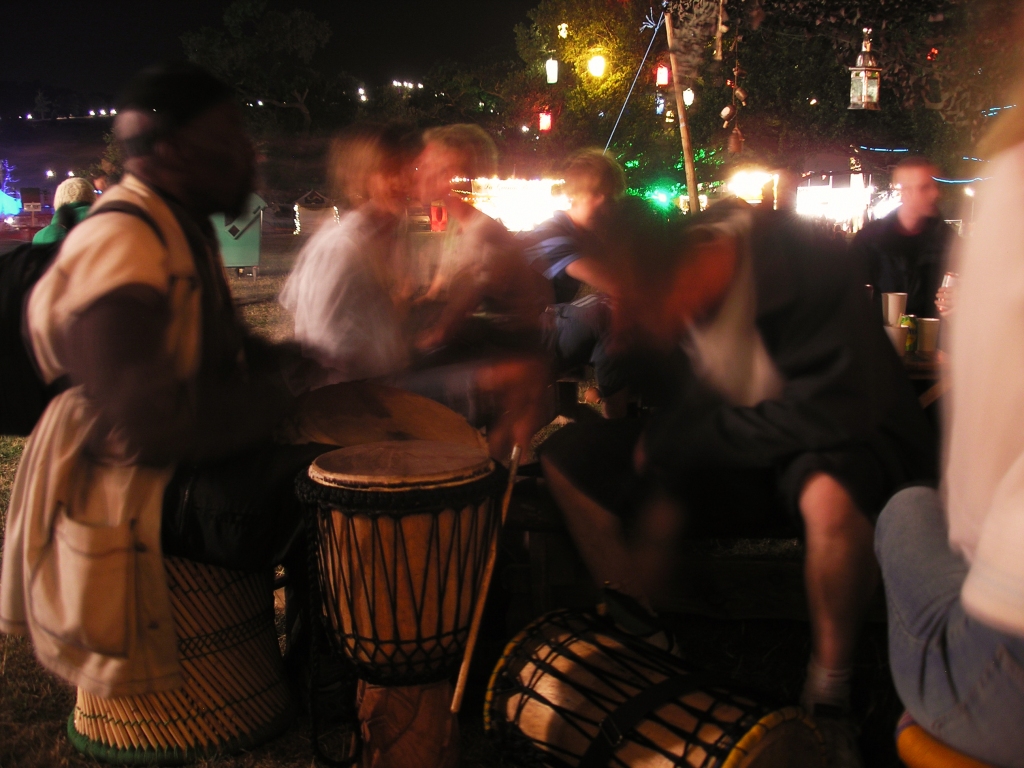


- At Monument



- She always sits so still…





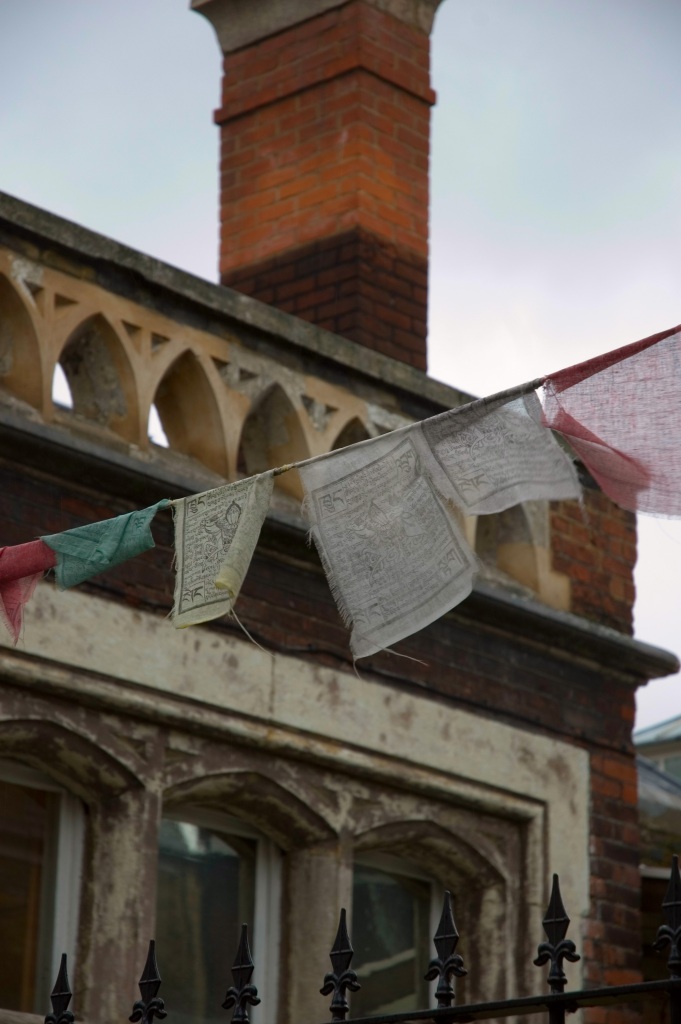

-
Archives
- January 2010 (1)
- October 2009 (1)
- July 2009 (1)
- April 2009 (3)
- March 2009 (4)
-
Categories
-
RSS
Entries RSS
Comments RSS



